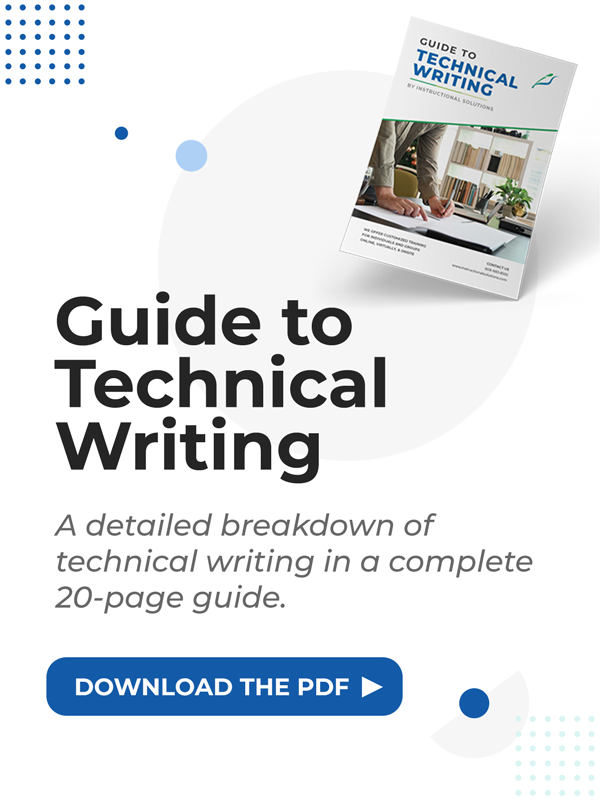How to Correctly Punctuate Bullet Point Lists

Originally published February 15, 2021, updated December 7, 2023

Table of Contents
How to punctuate bullet lists can be tricky because various style guides contradict each other.
Use a period after every bullet that is a sentence or after a bullet list that completes the opening stem sentence that introduces it. Don’t use a period if the bullet lists are one word or a short phrase that feels like an inventory or shopping list
This grammar guide accompanies our post on how to write better bullet points.
We have three punctuation issues to consider:
-
Should the ending punctuation at the end of each bullet list be a period, a semicolon, or no punctuation?
-
Should the first letter of the bullet list be capitalized?
-
Should the opening stem sentence end with a colon to introduce the bullet lists or use no colon?
Let me frame my recommendations. You are reading a blog that focuses on business writing. The most accepted style guide in business writing and web publishing is the AP Stylebook. We recommend following the AP Stylebook’s bullet punctuation, with additional clarifications that AP doesn’t address.
Learn more about how to write better bullet lists.
Let’s tackle the ending punctuation of each bullet first.
By far, this is the most vexing punctuation issue!
AP Stylebook recommends:
“Capitalize the first word following the dash or bullet. Use periods, not semicolons, at the end of each section or a phrase.” This is clear, but AP doesn’t fully address when to omit a period at the end of each bullet.
The Gregg Reference Manual uses periods only after bullets that are dependent clauses and long phrases.
Garner's Modern American Usage inserts periods at the end of bullet lists only if the bullet list begins with a capital letter. However, Garner qualifies this:
"If you begin each item with a lowercase letter, put a semicolon at the end of each item, use and after the next-to-last item, and put a period after the last item." Garner calls this "vertical lists punctuated as a sentence." This is where the semicolon confusion comes in.
The Chicago Manual of Style has pages of rules and examples of bullet lists that agree with the Garner style recommendation to use semicolons after each item, use and after the next-to-last-item, and use a period at the end of the last item.
Here is an example of that style:
I love traveling to Ireland because of its:
- connection to my family;
- beautiful green scenery; and
- friendly, fun, welcoming people.
I do not recommend this “vertical lists punctuated as a sentence” format with semicolons for business writing. It’s visually cluttered, impeding easy scan. While it’s not wrong and some style guides recommend this, it’s not the best business writing choice.
I recommend AP’s style guidance for end punctuation:
- Use a period or other full stop after every bullet that is a sentence. (Just like this bullet list you’re reading now.)
- Use a period after a bullet list that completes the opening stem sentence that introduces it.
- Don’t use a period after bullet lists that are not complete sentences or do not complete the opening stem sentence.
- Don’t use semicolons to end punctuation.
- Use either all full sentences in your bullet lists or all fragments. Avoid a mix.
Learn how to use correct punctuation every time.
Our grammar and proofreading course will help you create flawless documents every time.
View Course & OutlineAll of these recommendations follow AP, but one clarification is needed. Don’t use a period at the end of a bullet if the bullet lists are one word or a short phrase that feels like an inventory or shopping list.
Here is an example of bullet lists that need a period to complete the introductory stem sentence:
I love traveling to Ireland because of its:
- Connection to my family.
- Beautiful green scenery.
- Friendly, fun, welcoming people.
Here is an example of bullets lists that do not need a period because they are fragments not connected to the introductory stem sentence:
These are reasons I love traveling to Ireland:
- Connection to my family
- Beautiful green scenery
- Friendly, fun, welcoming people
Here is an example of bullet lists that do not need a period because they’re one word or a short phrase that feels like an inventory or shopping list:
I love traveling to Ireland because of its:
- Natural beauty
- Friendly people
- Music
- Brown bread
- Rainbows
- History
Should the first letter of the bullet list be capitalized?
This issue is straightforward. Yes. In business writing, capitalize the first letter of bullet lists.
All style guides agree to capitalize the first letter of the bullet list unless you opt for the "vertical lists punctuated as a sentence" format using semicolons, illustrated above.
Good business writing seeks to make information easy to understand. It’s illogical to use semicolons and “vertical lists punctuated as sentences” in business writing because it’s visually cluttered so it’s harder to scan.
Problem solved. In business writing, capitalize the first letter and keep bullet list punctuation clean.
I love traveling to Ireland because of its:
- Connection to my family.
- Beautiful green scenery.
- Friendly, fun, welcoming people.
Should the opening stem sentence end with a colon to introduce the bullet lists?
Another easy decision. In business writing, yes, use a colon at the end of the introductory stem sentence.
I love traveling to Ireland because of its: [AP, Garner, and Gregg use the colon here. Chicago Manual of Style does not. Again, style guides don’t agree.]
- Connection to my family.
- Beautiful green scenery.
- Friendly, fun, welcoming people.
Because AP recommends the colon and AP is the preferred business writing style guide, I recommend using it consistently in your business writing.
Not using a colon isn’t wrong, but omit it only with certainty that you comply with the style guide of your choice.
Does this matter?
Are we nitpicking punctuation with these considerations of bullet lists? Certainly, your business writing’s substance and information are far more critical than exacting punctuation that technically is neither correct nor incorrect since style guides vary.
However, clear bullet list punctuation adds visual “scan-ability” to your business writing. It makes it easier for your reader. Careful punctuation also reflects thought and care.
If you feel punctuation does not matter, consider the impact of punctuation in these bullet lists:
- A woman without her man is nothing.
- A woman. Without her, man is nothing.
If you want to take a deep dive into grammar and learn how to apply the many rules to your business writing, our online Proofreading and Grammar Course is perfect for you. You'll get instructor feedback on your actual writing and an individualized grammar correction plan.


